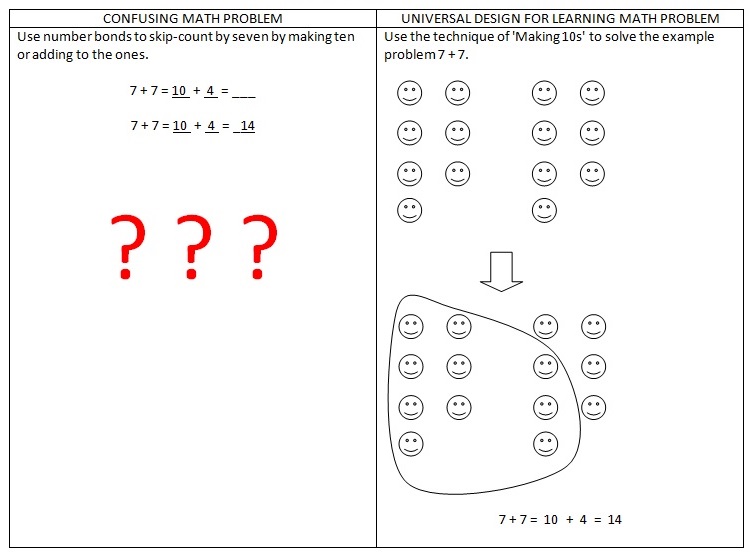Children ask their parents for help with math homework problems, parents take one look and freak out. The wording is unlike anything they've ever seen. Social media outlets are filled with pictures of these confusing math homework problems supposedly based on common core standards. However, much of the criticism and confusion about these situations stems from the actual implementation of the standards.
The Common Core Standards for Mathematical Practice provide a (mostly) clear set of math skills and concepts that help students solve real-world problems, but puts the focus on the process rather than the correct answer. Common core proponents argue that, paradoxically, rationale beats getting the right answer. Traditional math tricks to simplify problems such as PEMDAS or crossing off zeroes in a fraction shield the student from a deeper understanding of mathematics. Common core standards attempt to engender a deeper understanding for math and not merely produce students that can ace problems using mechanical methods. The standards, however, don't necessarily tell you how to implement instruction of these math skills and concepts - this is why we need teachers!
Fortunately, within the special education portion, the standards do refer to a curriculum and instructional framework that teachers can use to design their lessons. This framework, Universal Design for Learning (UDL), stresses that an effective goal must be flexible enough to allow students multiple ways to successfully reach it. This includes providing multiple means of representation, multiple means of expression/action, and multiple means of engagement. With this in mind, crazy examples like this math problem aren't necessarily the fault of common core. The fault could be a poor representation, or a poor means of engagement, from either a corporate textbook company or an overworked and underpaid math teacher.
This UDL framework aligns with many common core standards that differentiate between the means (the how) and the goal (the what). When teachers successfully incorporate these practices, they reach and engage the maximum number of learners. They acknowledge that students possess varied skills, unique experiences, and different learning styles. They emphasize flexible and customizable curriculum and instruction. Finally, they use multiple modes of presenting content, engaging students, and assessing their comprehension.
Below is an example of an elementary school math problem that a teacher might present to her students. The math exercise on the left side shows the way the problem was presented on a typical math worksheet following the common core standards curriculum. The math exercise on the right illustrates how such a problem can incorporate ideas from the UDL framework to enhance student learning and engagement.

See. It' all about the representation. Both examples are the same common core concept, but the right-hand panel will not only make a six year old smile, but help them make 10's, which is a very practical skill.
Photo Credit: woodleywonderworks on Flickr

New Math Teacher
New Math Teacher boasts an enthusiastic team of passionate lifelong learners who love to grow that passion in others as well. Our curriculum specialists love to post creative and engaging ideas about math education and learning. We welcome helpful feedback and constructive criticism.


It's a tough situation. Teachers (and parents) need more training on implementing (and coaching through) these new standards.